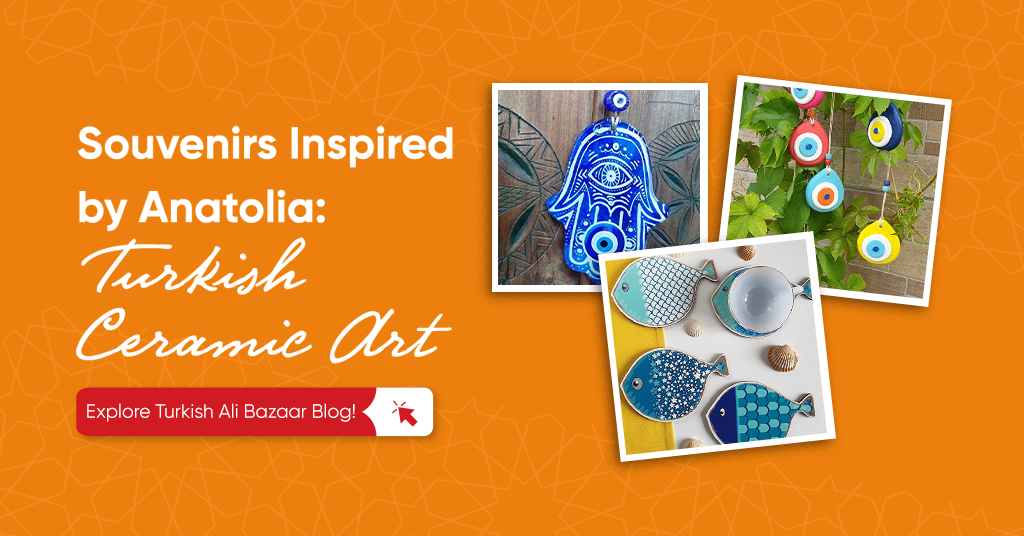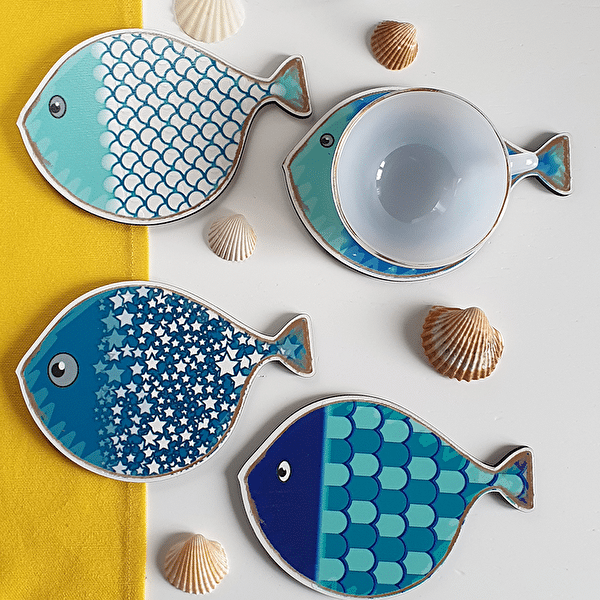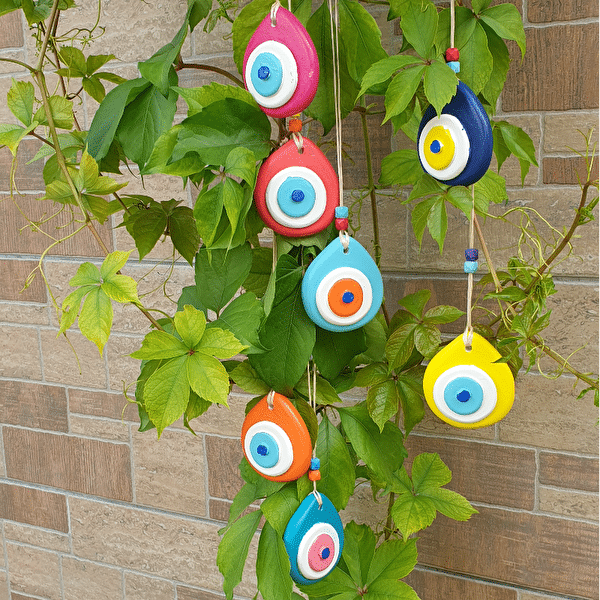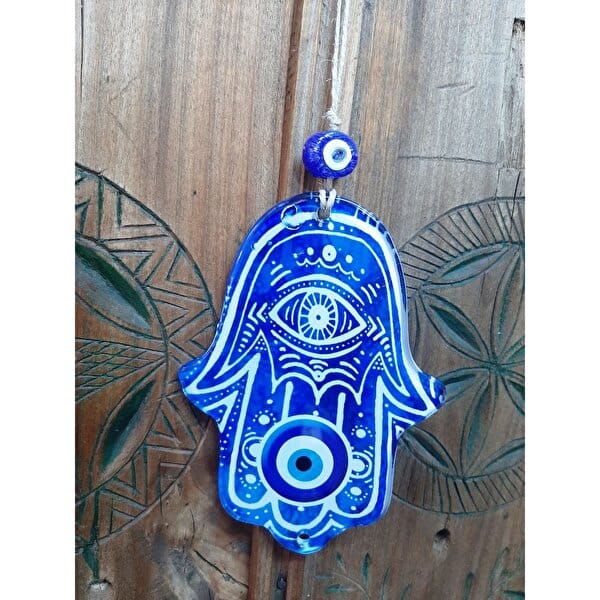
Turkish ceramic art has a rich and colorful history and has its origins in the traditional crafts of the Turkish tribes in Central Asia. Turkish ceramic art, which began to develop in Anatolia in the 9th century with the adoption of Islam, reached its peak during the Seljuk and Ottoman periods. Especially during the Seljuk period, tiles produced in centers such as Konya and Niğde were decorated with geometric and floral motifs and unique works dominated by blue, green and turquoise colors.
During the Ottoman period, Iznik and Kütahya ceramics came to the forefront and gained worldwide fame with the unique techniques and rich color palette developed during this period. Iznik tiles became an indispensable part of classical Ottoman architecture and were used in mosques, palaces and fountains to decorate these structures. Today, Turkish ceramic art continues to exist as a branch of art where traditional techniques are blended with modern designs, cultural heritage is preserved and innovative approaches are adopted.
Fish Coasters Set of 4

Turkish Ceramic Art: Varieties and Designs
Turkish ceramic art is recognized worldwide for its diversity and aesthetic richness. Iznik tiles, one of the best-known representatives of this art, reached its peak in the Ottoman Empire in the 16th and 17th centuries. Iznik tiles draw attention especially with their colors in red, dark blue, turquoise and green tones and the floral, leaf and geometric motifs created with these colors. While each tile reflects the artistic and cultural values of the period, it also contains symbolic expressions of Ottoman court life and religious beliefs.
Unlike Iznik tiles, Kütahya ceramics, on the other hand, are more commonly seen in daily use items. Kütahya’s colorful vases, plates, and ornaments are decorated with traditional Turkish motifs and usually painted in pastel tones. As a reflection of folk art, these works display the warmth and naturalness of daily life.
Each piece of Turkish ceramics has a rich story behind it. For example, the tulip motifs used on a tile plate can symbolize love and fertility, while the geometric patterns on a vase can represent eternity and order. The use of colors also carries a special meaning; blue often signifies calmness and spirituality, while red represents vitality and energy.
This diversity and depth of Turkish ceramic art shows that each work is not only an object of use, but also a carrier of culture, history and artistic expression. Today, this branch of art continues to live and evolve thanks to both the preservation of traditional techniques and their reinterpretation with modern designs.
Production Process of Handmade Ceramics
The production process of handmade ceramics is a reflection of an art that has remained almost unchanged since ancient times and requires patience and mastery. This process includes the selection of the soil, shaping, decorating, drying and firing.
Soil Selection and Preparation: The first step in ceramic making is the selection of quality clay. Clay should generally have a certain mineral content and plasticity. The selected clay is cleaned of impurities and mixed with water to a workable consistency. This process ensures that the clay has a homogeneous structure.
Shaping: After the clay is prepared, it is shaped into the desired form by the artists. This can be done using a pottery bench or by hand. On a pottery bench, the clay is shaped on a rotating platform using the artist’s hands and sometimes small tools. Hand shaping allows more original and complex forms to be created.
Drying: The shaped ceramic should be dried slowly and evenly. This stage is important to avoid cracking and distortion. Usually ceramics are dried in natural weather conditions, protected from direct sunlight.
First Baking (Biscuit Baking): The dried ceramics are subjected to a first firing process called biscuit baking. This stage hardens the ceramics and allows the glazes or paints to adhere better. The temperature usually varies between 800°C and 1000°C.
Decorating and Glazing: After biscuit firing, the ceramics are painted and glazed. Glazing adds a glossy, glass-like coating to the ceramic surface and provides waterproofing. Decorating is done using various painting techniques and patterns. This stage is the most creative and personal part of ceramic art.
Final Baking: After the decoration and glazing processes are complete, the ceramics are placed in the kiln for final baking. This stage allows the glazes and paints to set and harden on the ceramic surface. The temperature, usually between 1000°C and 1300°C, determines the final durability and appearance of the piece.
Throughout these stages, the experience and creativity of the artisans ensures that each ceramic piece has a unique and artistic value. The production process of handmade ceramics is not only a process of technical skill, but also one that reflects the emotions and personal expression of the artist. Therefore, each handmade ceramic artifact is considered not only an object of use, but also a work of art.
Comparison of Modern and Traditional Designs
The combination of traditional patterns and modern designs in Turkish ceramic art shows that this art form both respects its historical roots and is open to contemporary aesthetics. Traditional Turkish ceramics are often inspired by the Seljuk and Ottoman periods and adorned with the characteristic motifs, colors and forms of these periods. These motifs include flowers, geometric patterns and calligraphic inscriptions. The color palette consists of rich shades of blue, green and red. Traditional designs also carry a certain symbolism and each motif has its own meaning.
The combination of traditional patterns and modern designs in Turkish ceramic art shows that this art form both respects its historical roots and is open to contemporary aesthetics. Traditional Turkish ceramics are often inspired by the Seljuk and Ottoman periods and adorned with the characteristic motifs, colors and forms of these periods. These motifs include flowers, geometric patterns and calligraphic inscriptions. The color palette consists of rich shades of blue, green and red. Traditional designs also carry a certain symbolism and each motif has its own meaning.
Modern Turkish ceramic designs, on the other hand, adopt a more minimalist and abstract approach. These designs feature simple lines, neutral colors and functional forms suitable for modern lifestyles. Modern ceramics are generally less ornate and characterized by clean, crisp lines. This approach reinterprets ceramic art with a more minimalist and modern aesthetic, in line with contemporary interior design.
A comparison of traditional and modern designs reveals that both approaches represent the dynamic face of Turkish ceramic art. While traditional patterns reflect Turkey’s rich cultural heritage and artistic past, modern designs reshape this heritage from a contemporary perspective.
7-Piece Colorful Evil Eye Beads and Evil Eye Beads with Bird

Ceramic Care and Protection
The care and protection of ceramic products is important to prolong the life of these precious items and maintain their aesthetic appearance.
Cleaning: Ceramic products should be cleaned gently. Avoid using harsh chemicals or abrasive cleaning agents. Instead, use warm water and a mild detergent to gently wipe the ceramics. If the products have fine details or reliefs, you can use a soft brush to clean these areas. After cleaning, dry the ceramics with a soft cloth.
Storage: When storing ceramic products, be careful to avoid rubbing and bumping them together. Painted or glazed surfaces are particularly susceptible to scratching. If stacking is necessary, it is a good idea to place a soft cloth or paper between the plates.
Also, protect ceramics from direct sunlight and extreme temperature changes, as these factors can cause discoloration or cracking.
Usage: If ceramic products are for everyday use, check that they are suitable for use in a microwave oven or dishwasher. Some handmade or specially glazed ceramics may not be suitable for use in such appliances. Also, make sure that ceramics used for hot dishes are not exposed to sudden changes in temperature, as this can lead to cracking.
Repairs: If a ceramic product develops cracks or chips, it is best to contact a professional restorer for repairs. Bonding at home can often lead to permanent and unaesthetic results.
Regular Inspection: Check your ceramic products regularly. This way, possible cracks or damage can be detected at an early stage and bigger problems can be avoided.
The care and protection of ceramic products ensures that these unique works of art retain their beauty and functionality for many years to come.
10.5×15 cm. Fusion Glass Hand of Mother Fatma (Hamsa Hand)

Turkish Ceramics as Souvenirs
Turkish ceramics, with their rich history and aesthetic diversity, are popular souvenir choices both locally and internationally. These ceramics offer a wide range of uses, from home decoration to everyday use, making them versatile and valuable gifts. Handmade ceramic plates in particular, each decorated with unique patterns and colors, can be used for a variety of purposes, from wall decoration to table settings. With their combination of traditional Turkish motifs and modern design elements, these plates enrich any interior.
Cup sets are another of the most popular souvenirs of Turkish ceramic art. Traditional Turkish coffee or tea sets stand out with their elegant designs and fine craftsmanship. These sets are ideal for everyday use and are also an elegant option for entertaining guests on special occasions. In addition, as a part of Turkish culture, these cup sets also carry value in a cultural context.
Vases are one of the most striking examples of Turkish ceramic art. Available in various sizes and shapes, these vases add an artistic touch to any setting with their vibrant colors and detailed motifs. When presented with a bouquet of flowers, these vases make an elegant and thoughtful gift. Moreover, the vases can be used not only for flowers but also as decorative objects, thus making an aesthetic addition to any corner of the home.
These souvenirs are not only useful and decorative objects, but also a reflection of Turkish culture and art. Each piece adds a special meaning and value to its recipient as an expression of hand labor and traditional art. Turkish ceramics should therefore not only be considered as a gift, but also as a cultural and artistic heritage.
Discover Turkish Ceramics at Turkish Ali Bazaar!
Now, at Turkish Ali Bazaar, you can find both quality and aesthetic ceramic products with discounts up to 40%. Whether you are looking for a special piece for yourself or a meaningful gift for your loved ones, don’t miss this limited time discount opportunity.











 Home
Home  Whishlist
Whishlist  Compare
Compare  Checkout
Checkout
Simply wish to say your article is as amazing The clearness in your post is just nice and i could assume youre an expert on this subject Well with your permission let me to grab your feed to keep updated with forthcoming post Thanks a million and please carry on the gratifying work